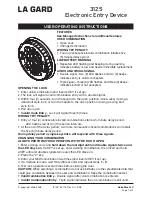
Beta Draft Confidential
Configuring ATM PVCs
About the PVC Tabs
ATM Services Configuration Guide for CBX 3500, CBX 500, GX 550, and B-STDX 9000
1/19/05
10-19
End-End Delay
Threshold (cell
transfer delay)
This feature determines the path of the PVC, depending on the
end-end delay threshold that you specify.
Enabled – Select the Enable check box so the PVC will not be
routed over a path whose total end-to-end delay exceeds the
entered value. This means that if you enable this field and enter a
value of 500
µ
sec in the Value field, the PVC will not be routed
over a path whose total end-to-end delay exceeds 500
µ
sec. The
NMS calculates the total end-to-end delay for a path by using the
sum of the end-to-end delays for each trunk in the path. The valid
range for this field is zero (0) – 16777214
µ
sec.
The value you enter should reflect your network topology. If a
PVC typically traverses high speed trunks, set the delay rate
lower. You need to increase the delay if the PVC uses low-speed
trunks.
Disabled – (default) If you clear the Enable check box this field
will be disabled.
Note: For more information, see the next section
Routing Thresholds Interact With LPort Routing Metrics.”
Network Overflow
Determines how PVC traffic is managed during trunk overflow or
failure conditions. This feature is used with VPNs. For more
information about VPNs, see
Chapter 13, “Configuring Layer 2
Select one of the following options:
Public – (default) PVCs are routed over dedicated VPN trunks.
However, in the event of failure, the customer’s traffic is allowed
to run over common trunks (shared by a variety of different
customers).
Restricted – PVCs can only use dedicated VPN trunks. A
customer using this mode must purchase redundancy trunks to be
used in the event of outages or other trunk failures.
Table 10-3.
Add PVC: Administrative Tab Fields (Continued)
Field
Action/Description
Содержание CBX 3500
Страница 888: ......
















































